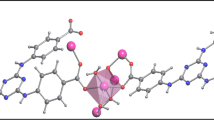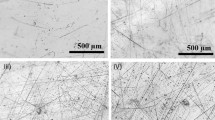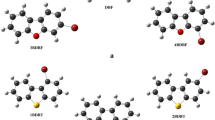Abstract
The effective enrichment and identification of lowly concentrated polychlorinated biphenyls (PCBs) in the environment is attracting much research attention due to human health concerns raised from their emissions. Cyclodextrins (CDs) are known to be capable to form inclusion complexes with a variety of organic molecules. The purpose of this study is to provide theoretical evidences whether CDs can form energetically stable inclusion complexes with PCBs through a host–guest interaction, and if so, whether infrared and Raman techniques are suitable for the detection of CD-modified PCBs. Focusing on a representative PCB molecule, 3,3′,4,4′,5-pentachlorobiphenyl (PCB126), we studied its molecular inclusion by β-CD (BCD) by performing molecular dynamics simulations and density functional theory calculations. Calculated results show that PCB126 and BCD preferentially form the stable 1:1 inclusion complex. The calculated IR spectra of the 1:1 inclusion complexes mainly present the spectra features of BCD and give only a slight indication for bands of the guest molecule. In contrast, the characteristic vibration modes of the guest molecule are remarkably prominent in the Raman spectra of the inclusion complexes. Based on the present results, we propose that BCD can potentially serve as a candidate for including PCB126 to form the stable 1:1 host–guest complex, and that Raman spectroscopy technology is expected to be suitable for the identification of the CD-modified PCBs, whereas IR spectroscopy is not feasible for such an application.








Similar content being viewed by others
References
Van den Berg, M., Birnbaum, L., Bosveld, A.T.C., Brunstrom, B., Cook, P., Feeley, M., Giesy, J.P., Hanberg, A., Hasegawa, R., Kennedy, S.W., Kubiak, T., Larsen, J.C., van Leeuwen, F.X.R., Liem, A.K.D., Nolt, C., Peterson, R.E., Poellinger, L., Safe, S., Schrenk, D., Tillitt, D., Tysklind, M., Younes, M., Warn, F., Zacharewski, T.: Toxic equivalency factors (TEFs) for PCBs, PCDDs, PCDFs for humans and wildlife. Environ. Health Perspect. 106, 775–792 (1998)
Safe, S.H.: Polychlorinated biphenyls (PCBs): environmental impact, biochemical and toxic responses, and implications for risk assessment. Crit. Rev. Toxicol. 24, 87–149 (1994)
Fischer, L.J., Seegal, R.F., Ganey, P.E., Pessah, I.N., Kodavanti, P.R.S.: Symposium overview: toxicity of non-coplanar PCBs. Toxicol. Sci. 41, 49–61 (1998)
Zhang, Q.Z., Li, S.Q., Qu, X.H., Shi, X.Y., Wang, W.X.: A quantum mechanical study on the formation of PCDD/Fs from 2-chlorophenol as precursor. Environ. Sci. Technol. 42, 7301–7308 (2008)
Qu, X.H., Wang, H., Zhang, Q.Z., Shi, X.Y., Xu, F., Wang, W.X.: Mechanistic and kinetic studies on the homogeneous gas-phase formation of PCDD/Fs from 2,4,5-trichlorophenol. Environ. Sci. Technol. 43, 4068–4075 (2009)
Gentleman, D.J.: PCB POP. Environ. Sci. Technol. 44, 2747–2748 (2010)
Hornbuckle, K., Robertson, L.: Polychlorinated biphenyls (PCBs): sources, exposures, toxicities. Environ. Sci. Technol. 44, 2749–2751 (2010)
Kumar, K.S., Kannan, K., Corsolini, S., Evans, T., Giesy, J.P., Nakanishi, J., Masunaga, S.: Polychlorinated dibenzo-p-dioxins, dibenzofurans and polychlorinated biphenyls in polar bear, penguin and south polar skua. Environ. Pollut. 119, 151–161 (2002)
Macdonald, R.W., Barrie, L.A., Bidleman, T.F., Diamond, M.L., Gregor, D.J., Semkin, R.G., Strachan, W.M.J., Li, Y.F., Wania, F., Alaee, M., Alexeeva, L.B., Backus, S.M., Bailey, R., Bewers, J.M., Gobeil, C., Halsall, C.J., Harner, T., Hoff, J.T., Jantunen, L.M.M., Lockhart, W.L., Mackay, D., Muir, D.C.G., Pudykiewicz, J., Reimer, K.J., Smith, J.N., Stern, G.A., Schroeder, W.H., Wagemann, R., Yunker, M.B.: Contaminants in the Canadian Arctic: 5 years of progress in understanding sources, occurrence and pathways. Sci. Total Environ. 254, 93–234 (2000)
Binelli, A., Provini, A.: The PCB pollution of Lake Iseo (N. Italy) and the role of biomagnification in the pelagic food web. Chemosphere 53, 143–151 (2003)
Pan, J., Yang, Y., Geng, C., Yeung, L.W.Y., Cao, X., Dai, T.: Polychlorinated biphenyls, polychlorinated dibenzo-p-dioxins and dibenzofurans in marine and lacustrine sediments from the Shandong Peninsula, China. J. Hazard. Mater. 176, 274–279 (2010)
Ramadass, P., Meerarani, P., Toborek, M., Robertson, L.W., Hennig, B.: Dietary flavonoids modulate PCB-induced oxidative stress, CYP1A1 induction, and AhR-DNA binding activity in vascular endothelial cells. Toxicol. Sci. 76, 212–219 (2003)
Oakley, G.G., Devanaboyina, U., Robertson, L.W., Gupta, R.C.: Oxidative DNA damage induced by activation of polychlorinated biphenyls (PCBs): implications for PCB-induced oxidative stress in breast cancer. Chem. Res. Toxicol. 9, 1285–1292 (1996)
Cogliano, V.J.: Assessing the cancer risk from environmental PCBs. Environ. Health Perspect. 106, 317–323 (1998)
Ulbrich, B., Stahlmann, R.: Developmental toxicity of polychlorinated biphenyls (PCBs): a systematic review of experimental data. Arch. Toxicol. 78, 252–268 (2004)
Hestermann, E.V., Stegeman, J.J., Hahn, M.E.: Relative contributions of affinity and intrinsic efficacy to aryl hydrocarbon receptor ligand potency. Toxicol. Appl. Pharmacol. 168, 160–172 (2000)
Brunstrom, B., Halldin, K.: EROD induction by environmental contaminants in avian embryo livers. Comp. Biochem. Physiol. C 121, 213–219 (1998)
Lores, M., Llompart, M., Gonzalez-Garcia, R., Gonzalez-Barreiro, C., Cela, R.: On-fibre photodegradation studies of polychlorinated biphenyls using SPME–GC–MS–MS: a new approach. Chemosphere 47, 607–615 (2002)
Lores, M., Llompart, M., Gonzalez-Garcia, R., Gonzalez-Barreiro, C., Cela, R.: Photolysis of polychlorinated biphenyls by solid-phase microextraction “on-fibre” versus aqueous photodegradation. J. Chromatogr. A 963, 37–47 (2002)
Chiarenzelli, J.R., Scrudato, R.J., Wunderlich, M.L., Pagano, J.J.: Combined steam distillation and electrochemical peroxidation (ECP) treatment of river sediment contaminated by PCBs. Chemosphere 45, 1159–1165 (2001)
Arienzo, M., Chiarenzelli, J., Scrudato, R., Pagano, J., Falanga, L., Connor, B.: Iron-mediated reactions of polychlorinated biphenyls in electrochemical peroxidation process (ECP). Chemosphere 44, 1339–1346 (2001)
Wiegel, J., Wu, Q.: Microbial reductive dehalogenation of polychlorinated biphenyls. FEMS Microbiol. Ecol. 32, 1–15 (2000)
Pieper, D.H.: Aerobic degradation of polychlorinated biphenyls. Appl. Microbiol. Biotechnol. 67, 170–191 (2005)
Borja, J., Taleon, D.M., Auresenia, J., Gallardo, S.: Polychlorinated biphenyls and their biodegradation. Process Biochem. 40, 1999–2013 (2005)
Gavlasova, P., Kuncova, G., Kochankova, L., Mackova, M.: Whole cell biosensor for polychlorinated biphenyl analysis based on optical detection. Int. Biodeterior. Biodegrad. 62, 304–312 (2008)
Yang, Y., Meng, G.: Ag dendritic nanostructures for rapid detection of polychlorinated biphenyls based on surface-enhanced Raman scattering effect. J. Appl. Phys. 107, 44315–44319 (2010)
Li, M., Meng, G., Huang, Q., Yin, Z., Wu, M., Zhang, Z., Kong, M.: Prototype of a porous ZnO SPV-based sensor for PCB detection at room temperature under visible light illumination. Langmuir 26, 13703–13706 (2010)
Huang, Z., Meng, G., Huang, Q., Yang, Y., Zhu, C., Tang, C.: Improved SERS performance from Au nanopillar arrays by abridging the pillar tip spacing by Ag sputtering. Adv. Mater. 22, 4136–4139 (2010)
Haglund, P., Korytar, P., Danielsson, C., Jordi, D., Wiberg, K., Leonards, P., Brinkman, U., Boer, J.: GC × GC-ECD: a promising method for the determination of dioxins and dioxin-like PCBs in food and feed. Anal. Bioanal. Chem. 390, 1815–1827 (2008)
Buzitis, J., Ylitalo, G.M., Krahn, M.M.: Rapid method for determination of dioxin-like polychlorinated biphenyls and other congeners in marine sediments using sonic extraction and photodiode array detection. Arch. Environ. Contam. Toxicol. 51, 337–346 (2006)
Szejtli, J.: Introduction and general overview of cyclodextrin chemistry. Chem. Rev. 98, 1743–1753 (1998)
Del Valle, E.M.M.: Cyclodextrins and their uses: a review. Process Biochem. 39, 1033–1046 (2004)
Vyas, A., Saraf, S., Saraf, S.: Cyclodextrin based novel drug delivery systems. J. Incl. Phenom. Macrocycl. Chem. 62, 23–42 (2008)
Messner, M., Kurkov, S.V., Jansook, P., Loftsson, T.: Self-assembled cyclodextrin aggregates and nanoparticles. Int. J. Pharm. 387, 199–208 (2010)
Szente, L., Szejtli, J.: Cyclodextrins as food ingredients. Trends Food Sci. Technol. 15, 137–142 (2004)
Szejtli, J., Szente, L.: Elimination of bitter, disgusting tastes of drugs and foods by cyclodextrins. Eur. J. Pharm. Biopharm. 61, 115–125 (2005)
Brusseau, M.L., Wang, X., Hu, Q.: Enhanced transport of low-polarity organic compounds through soil by cyclodextrin. Environ. Sci. Technol. 28, 952–956 (1994)
Leitgib, L., Gruiz, K., Fenyvesi, E., Balogh, G., Muranyi, A.: Development of an innovative soil remediation: “cyclodextrin-enhanced combined technology”. Sci. Total Environ. 392, 12–21 (2008)
Dean, J.R., Scott, W.C.: Recent developments in assessing the bioavailability of persistent organic pollutants in the environment. Trends Anal. Chem. 23, 609–618 (2004)
Sawicki, R., Mercier, L.: Evaluation of mesoporous cyclodextrin–silica nanocomposites for the removal of pesticides from aqueous media. Environ. Sci. Technol. 40, 1978–1983 (2006)
Fava, F., Gioia, D.D., Marchetti, L.: Cyclodextrin effects on the ex-Situ bioremediation of a chronically polychlorobiphenyl-contaminated soil. Biotechnol. Bioeng. 58, 345–355 (1998)
Fava, F., Ciccotosto, V.F.: Effects of randomly methylated-β-cyclodextrins (RAMEB) on the bioavailability and aerobic biodegradation of polychlorinated biphenyls in three pristine soils spiked with a transformer oil. Appl. Microbiol. Biotechnol. 58, 393–399 (2002)
Fava, F., Bertin, L., Fedi, S., Zannoni, D.: Methyl-β-cyclodextrin-enhanced solubilization and aerobic biodegradation of polychlorinated biphenyls in two aged-contaminated soils. Biotechnol. Bioeng. 81, 381–390 (2003)
Ehsan, S., Prasher, S.O., Marshall, W.D.: Simultaneous mobilization of heavy metals and polychlorinated biphenyl (PCB) compounds from soil with cyclodextrin and EDTA in admixture. Chemosphere 68, 150–158 (2007)
Kida, T., Nakano, T., Fujino, Y., Matsumura, C., Miyawaki, K., Kato, E., Akashi, M.: Complete removal of chlorinated aromatic compounds from oils by channel-type γ-cyclodextrin assembly. Anal. Chem. 80, 317–320 (2008)
Shao, D., Sheng, G., Chen, C., Wang, X., Nagatsu, M.: Removal of polychlorinated biphenyls from aqueous solutions using β-cyclodextrin grafted multiwalled carbon nanotubes. Chemosphere 79, 679–685 (2010)
Safe, S.: Toxicology, structure–function relationship, and human and environmental health impacts of polychlorinated biphenyls: progress and problems. Environ. Health Perspect. 100, 259–268 (1993)
Vezina, C.M., Walker, N.J., Olson, J.R.: Subchronic exposure to TCDD, PeCDF, PCB126, and PCB153: effect on hepatic gene expression. Environ. Health Perspect. 112, 1636–1644 (2004)
Li, L.A., Wang, P.W., Chang, L.W.: Polychlorinated biphenyl 126 stimulates basal and inducible aldosterone biosynthesis of human adrenocortical H295R cells. Toxicol. Appl. Pharmacol. 195, 92–102 (2004)
Song, M.O., Freedman, J.H.: Activation of mitogen activated protein kinases by PCB126 (3,3′,4,4′,5-Pentachlorobiphenyl) in HepG2 cells. Toxicol. Sci. 84, 308–318 (2005)
Llabjani, V., Trevisan, J., Jones, K.C., Shore, R.F., Martin, F.L.: Binary mixture effects by PBDE congeners (47, 153, 183, or 209) and PCB congeners (126 or 153) in MCF-7 cells: biochemical alterations assessed by IR spectroscopy and multivariate analysis. Environ. Sci. Technol. 44, 3992–3998 (2010)
Lindahl, E., Hess, B., van der Spoel, D.: GROMACS 3.0: a package for molecular simulation and trajectory analysis. J. Mol. Model. 7, 306–317 (2001)
Van der Spoel, D., Lindahl, E., Hess, B., Groenhof, G., Mark, A.E., Berendsen, H.J.C.: GROMACS: fast, flexible, and free. J. Comput. Chem. 26, 1701–1718 (2005)
Hess, B., Kutzner, C., Van der Spoel, D., Lindahl, E.: GROMACS 4: algorithms for highly efficient, load-balanced, and scalable molecular simulation. J. Chem. Theory Comput. 4, 435–447 (2008)
Zhang, H., Feng, W., Li, C., Tan, T.: Investigation of the inclusions of puerarin and daidzin with β-cyclodextrin by molecular dynamics simulation. J. Phys. Chem. B 114, 4876–4883 (2010)
Brocos, P., Diaz-Vergara, N., Banquy, X., Perez-Casas, S., Costas, M., Pineiro, A.: Similarities and differences between cyclodextrin-sodium dodecyl sulfate host–guest complexes of different stoichiometries: molecular dynamics simulations at several temperatures. J. Phys. Chem. B 114, 12455–12467 (2010)
Schuettelkopf, A.W., van Aalten, D.M.F.: PRODRG: a tool for high-throughput crystallography of protein-ligand complexes. Acta. Crystallogr. D60, 1355–1363 (2004)
Berendsen, H.J.C., Postma, J.P.M., van Gunsteren, W.F., Hermans, J.: Interaction models for water in relation to protein hydration. In: Pullman, B. (ed.) Intermolecular Forces, pp. 331–342. Reidel, Dordrecht (1981)
Darden, T., York, D., Pedersen, L.: Particle mesh Ewald: an N-log(N) method for Ewald sums in large systems. J. Chem. Phys. 98, 10089–10092 (1993)
Essmann, U., Perera, L., Berkowitz, M.L., Darden, T., Lee, H., Pedersen, L.G.: A smooth particle mesh Ewald method. J. Chem. Phys. 103, 8577–8593 (1995)
Berendsen, H.J.C., Postma, J.P.M., van Gunsteren, W.F., DiNola, A., Haak, J.R.: Molecular dynamics with coupling to an external bath. J. Chem. Phys. 81, 3684–3690 (1984)
Frisch, M.J., Trucks, G.W., Schlegel, H.B., Scuseria, G.E., Robb, M.A., Cheeseman, J.R., Montgomery Jr, J.A., Vreven, T., Kudin, K.N., Burant, J.C., Millam, J.M., Iyengar, S.S., Tomasi, J., Barone, V., Mennucci, B., Cossi, M., Scalmani, G., Rega, N., Petersson, G.A., Nakatsuji, H., Hada, M., Ehara, M., Toyota, K., Fukuda, R., Hasegawa, J., Ishida, M., Nakajima, T., Honda, Y., Kitao, O., Nakai, H., Klene, M., Li, X., Knox, J.E., Hratchian, H.P., Cross, J.B., Bakken, V., Adamo, C., Jaramillo, J., Gomperts, R., Stratmann, R.E., Yazyev, O., Austin, A.J., Cammi, R., Pomelli, C., Ochterski, J.W., Ayala, P.Y., Morokuma, K., Voth, G.A., Salvador, P., Dannenberg, J.J., Zakrzewski, V.G., Dapprich, S., Daniels, A.D., Strain, M.C., Farkas, O., Malick, D.K., Rabuck, A.D., Raghavachari, K., Foresman, J.B., Ortiz, J.V., Cui, Q., Baboul, A.G., Clifford, S., Cioslowski, J., Stefanov, B.B., Liu, G., Liashenko, A., Piskorz, P., Komaromi, I., Martin, R.L., Fox, D.J., Keith, T., Al-Laham, M.A., Peng, C.Y., Nanayakkara, A., Challacombe, M., Gill, P.M.W., Johnson, B., Chen, W., Wong, M.W., Gonzalez, C., Pople, J.A.: Gaussian 03, Revision D. 01. Gaussian, Pittsburgh (2004)
Becke, A.D.: Density-functional thermochemistry. I. The effect of the exchange-only gradient correction. J. Chem. Phys. 96, 2155–2160 (1992)
Lee, C., Yang, W., Parr, R.G.: Development of the Colle–Salvetti correlation-energy formula into a functional of the electron density. Phys. Rev. B 37, 785–789 (1988)
Weinzinger, P., Weiss-Greiler, P., Snor, W., Viernstein, H., Wolschann, P.: Molecular dynamics simulations and quantum chemical calculations on β-cyclodextrin–spironolactone complex. J. Incl. Phenom. Macrocycl. Chem. 57, 29–33 (2007)
Snor, W., Liedl, E., Weiss-Greiler, P., Viernstein, H., Wolschann, P.: Density functional calculations on meloxicam-β-cyclodextrin inclusion complexes. Int. J. Phytorem. 381, 146–152 (2009)
Steiner, T., Koellner, G.: Crystalline β-cyclodextrin hydrate at various humidities: fast, continuous, and reversible dehydration studied by X-ray diffraction. J. Am. Chem. Soc. 116, 5122–5128 (1994)
Liu, P., Zhang, D.J., Zhan, J.H.: Investigation on the inclusions of PCB52 with cyclodextrins by performing DFT calculations and molecular dynamics simulations. J. Phys. Chem. A 114, 13122–13128 (2010)
Acknowledgments
This work is jointly supported by National Basic Research Program of China (973 Program 2007CB936602), National Natural Science Foundation of China (NSFC 20873076, 21075077), and Shandong Provincial Natural Science Foundation for Distinguished Young Scholar (JQ201004).
Author information
Authors and Affiliations
Corresponding authors
Rights and permissions
About this article
Cite this article
Liu, P., Xu, H., Zhang, D. et al. Molecular inclusion of PCB126 by beta-cyclodextrin: a combined molecular dynamics simulation and quantum chemical study. J Incl Phenom Macrocycl Chem 76, 301–309 (2013). https://doi.org/10.1007/s10847-012-0199-4
Received:
Accepted:
Published:
Issue Date:
DOI: https://doi.org/10.1007/s10847-012-0199-4




